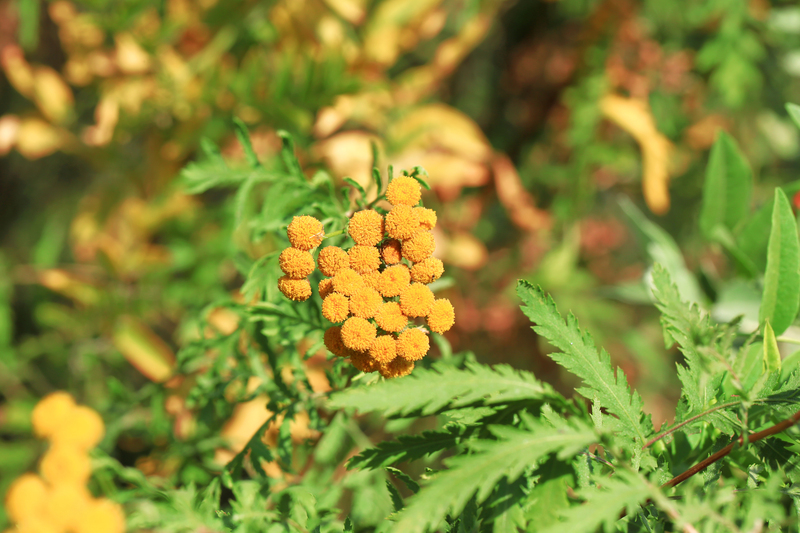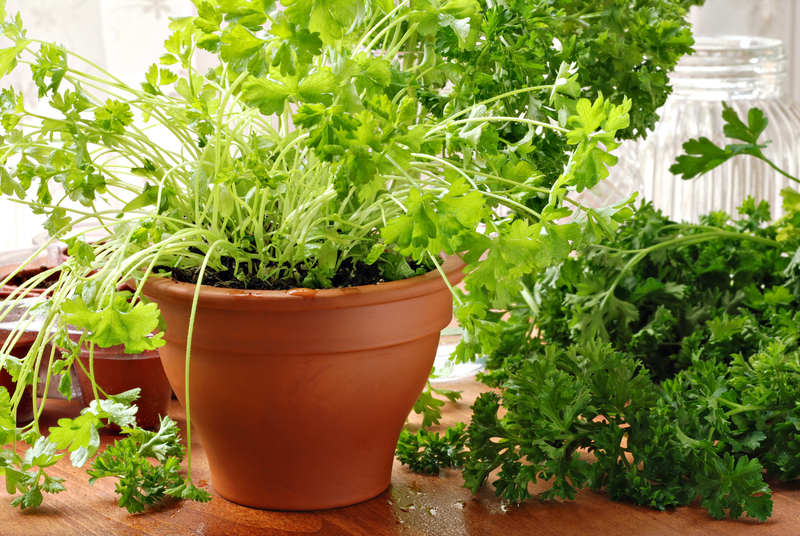Explore the basics and benefits of container gardening
Posted on 16/09/2025
Explore the Basics and Benefits of Container Gardening
Are you fascinated by the thought of growing your own plants, flowers, or even vegetables, but held back by limited space or soil conditions? Container gardening could be the solution you've been seeking! Versatile, practical, and accessible even for beginners, container gardening is fast becoming a popular choice among urban dwellers and hobbyists alike. This comprehensive guide explores the basics and benefits of container gardening, helping you transform small spaces into verdant retreats.

What is Container Gardening?
Container gardening involves growing plants in containers instead of planting directly in the ground. Whether you choose pots, tubs, boxes, hanging baskets, or repurposed objects, these containers act as controlled mini-gardens. Container gardening for beginners is particularly appealing because it removes the barriers of poor soil and restricted yard space, allowing aspiring gardeners to nurture their favorite plants virtually anywhere.
Why Choose Container Gardening?
- Space efficiency: Perfect for balconies, patios, rooftops, and small yards.
- Flexibility: Move containers to maximize sunlight, create interest, or shelter plants from harsh weather.
- Soil control: Customize soil types for different plants without the constraints of existing garden soil.
- Decorative potential: Containers add visual appeal to indoor and outdoor settings.
- Pest and disease management: Less contact with native soil reduces risk of certain pests and diseases.
Understanding the Essentials of Container Gardening
If you're ready to begin, learning the basics of container gardening is your first step. Here's what you need to know:
Choosing the Right Container
The type of container you select directly affects the health and growth of your plants. Common materials include:
- Terracotta: Breathable and classic but can dry quickly.
- Plastic: Lightweight, retains moisture, and comes in countless sizes and colors.
- Ceramic: Glazed ceramics hold moisture and feature decorative designs.
- Wooden planters: Rustic appeal, but ensure rot-resistant woods or proper lining for longevity.
- Metal: Stylish, but may heat up quickly in direct sunlight.
Whatever material you choose, always ensure containers have adequate drainage to prevent waterlogging, which can suffocate roots and promote rot.
Selecting the Ideal Potting Mix
Unlike ground gardening, successful potted plant gardening requires premium potting mixes rather than native soil. A good potting mix is:
- Lightweight and well-aerated
- Moisture-retentive yet fast-draining
- Rich in organic matter for steady nutrient supply
Choosing the Right Plants
Another crucial container gardening tip is picking plants suited to your environment and container size. Consider:
- Sunlight requirements: Match shade-lovers (like ferns and impatiens) or sun-worshippers (such as tomatoes and geraniums) to your available light.
- Growth habit: Trailing, upright, or compact--all impact the container's aesthetics and practicality.
- Root depth: Deep containers suit tomatoes, while shallow ones are great for herbs or succulents.
Popular plants for container gardening include:
- Herbs: basil, thyme, mint, chives
- Vegetables: lettuce, peppers, radishes, cherry tomatoes
- Flowers: petunias, marigolds, pansies, begonias
- Succulents and cacti
Planting and Caring for Your Container Garden
How to Plant in Containers
Follow these steps to ensure vibrant and healthy plants:
- Prep your container: Clean thoroughly, plug drainage holes with a shard or mesh, and fill with potting mix, leaving an inch below the rim.
- Plan plant placement: Arrange plants while still in their nursery pots to create an appealing layout.
- Plant thoughtfully: Remove plants gently, loosen root balls, and plant at the correct depth. Fill gaps with more mix and press down lightly.
- Water deeply: Water right after planting so soil settles evenly around roots.
Essential Container Gardening Care Tips
Maintenance for your container garden doesn't have to be overwhelming. Here's how to keep your plants thriving:
- Watering: Containers dry out faster than beds. Check soil moisture daily, especially in summer.
- Feeding: Fertilizer leaches out with frequent watering. Use a balanced liquid fertilizer every two to four weeks, or slow-release granules at planting.
- Pruning: Remove dead leaves and spent flowers to encourage continuous blooming and bushy growth.
- Repotting: Refresh potting mix and move root-bound plants to larger containers as needed.
- Pest management: Check plants regularly for aphids, spider mites, or mildew. Treat issues promptly to protect your portable garden.
Explore the Key Benefits of Container Gardening
Why are so many home gardeners choosing container gardening? Explore its many advantages:
1. Maximizing Limited Space
For urban residents or those with modest yards, container gardening makes efficient use of small spaces. Vertical arrangements, stacked pots, and hanging baskets all increase planting area without expanding your garden's footprint.
2. Year-Round Gardening Possibilities
Containers are mobile, so you can bring sensitive plants indoors before frost or start seeds earlier in spring. This flexibility extends your gardening season, making it possible to enjoy fresh herbs or colorful blooms year-round.
3. Enhanced Accessibility
Gardening in pots is ideal for those with limited mobility, physical challenges, or who simply prefer tending to plants at waist height. Place containers atop tables, shelves, or plant stands to reduce bending and kneeling.
4. Soil and Water Control
With container gardening, you pick the potting mix and moisture levels, suiting each plant's exact needs. This targeted care improves plant health and can also make watering more efficient.
5. Improved Pest and Disease Management
Isolating plants in containers helps limit the spread of soil-borne diseases and pests. Plus, you can easily move sick or infested plants away from healthy ones, reducing the risk of widespread problems.
6. Creative Personalization
From sleek ceramic pots to repurposed vintage crates, potted plant gardening offers endless opportunities to express your style. Mix colors, heights, and plant types for eye-catching decorative effects, or grow culinary herbs to create a functional kitchen garden right outside your window.
7. Sustainability and Eco-Friendliness
Grow your own vegetables, fruits, and herbs to reduce your carbon footprint and enjoy fresh, homegrown produce. Repurposing containers minimizes waste, while using organic practices further benefits the environment.
Common Questions About Container Gardening
What Containers Are Best for Vegetable Gardening?
For vegetable container gardening, bigger is often better--at least 12-18 inches deep for roots to grow freely. Choose sturdy pots with good drainage and consider food-safe materials if growing edibles.
How Often Should I Water Container Plants?
Frequency depends on weather, plant type, and container size. In hot weather, daily watering may be required; always check the top inch of soil--if dry, it's time to water.
Can I Reuse Potting Soil?
While you can partially refresh and sterilize old soil, it's best to start with fresh potting mix for disease-sensitive or edible plants. Mixing in compost can rejuvenate tired potting soils.
What Are Some Low-Maintenance Plants for Container Gardening?
Try succulents, herbs, geraniums, petunias, or snake plants. These tolerate irregular watering and still look great, making them perfect for busy or novice gardeners.

Tips for Successful Container Gardening
- Start small: Don't overwhelm yourself--try a few containers and expand as you gain confidence.
- Layer plants: Combine tall, medium, and trailing species for dimension and beauty.
- Rotate containers: Move pots as needed to keep up with changing sunlight patterns or weather.
- Label plants: Especially useful for edible varieties or when experimenting with new species.
- Experiment with design: Mix colors, textures, and container types for a truly personal garden.
- Maintain regularly: Regular checking prevents issues and keeps your garden looking its best.
Final Thoughts: Start Your Container Gardening Adventure Today
As you can see, exploring the basics and benefits of container gardening unlocks a world of opportunity for gardeners of all skill levels. Whether you're seeking to beautify a balcony, harvest fresh herbs all year, or simply add greenery to your home, container gardening provides the flexibility, creativity, and ease you need. Start with a single pot or planter and see how quickly your confidence--and your garden--will grow!
Ready to dig in? Grab a pot, pick a plant, and let the joys of container gardening transform your space and your mood.

